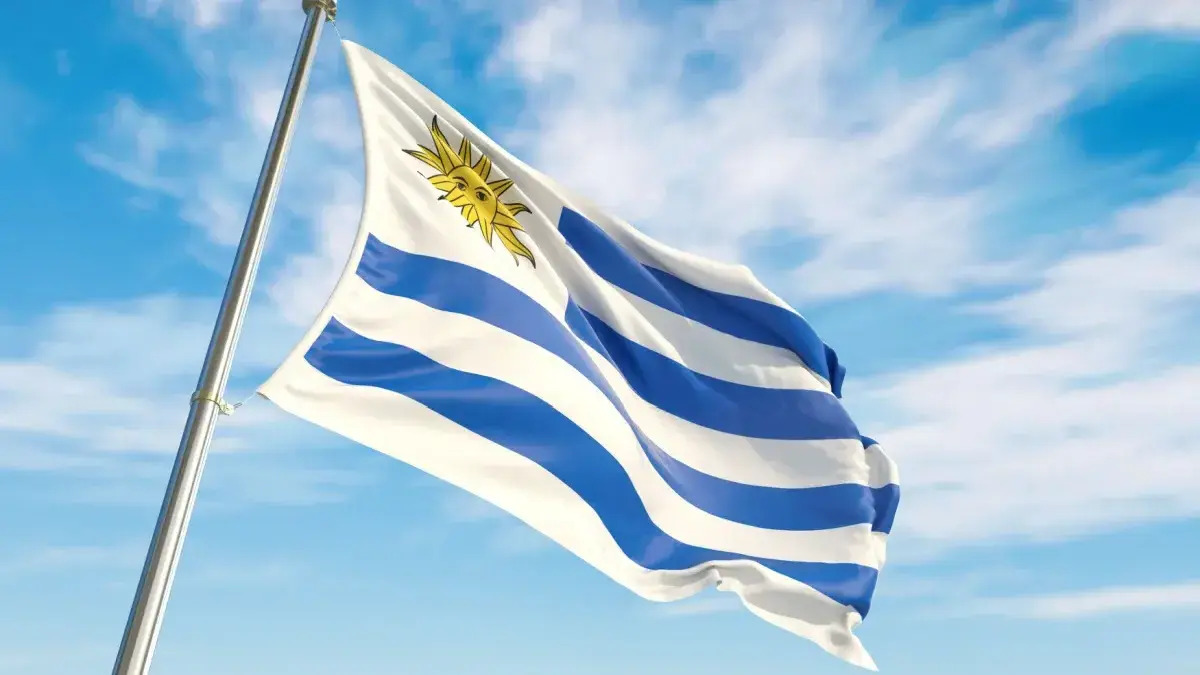The Hidden Secrets Of Uruguay’s Flag

Have you ever wondered about the hidden secrets of Uruguay’s flag? This small South American country has a flag rich in history and symbolism. The design features nine horizontal stripes, alternating white and blue, representing the original nine departments of Uruguay. In the upper left corner, a golden sun with a face, known as the Sun of May, shines brightly. This sun symbolizes freedom and independence, drawing inspiration from the May Revolution of 1810. Each element of the flag tells a story of Uruguay’s journey to becoming a nation. Let's dive into the fascinating details behind this unique flag.
The Sun of May
Uruguay's flag features a radiant sun with a face, known as the Sun of May. This symbol holds deep historical significance and represents freedom and independence. Let's explore some places where you can feel the spirit of this emblem.
Montevideo: The capital city, Montevideo, is the heart of Uruguay's history and culture. Visit the Plaza Independencia to see the statue of José Gervasio Artigas, a national hero who fought for independence.
Colonia del Sacramento: A UNESCO World Heritage site, Colonia del Sacramento offers a glimpse into Uruguay's colonial past. Wander through its cobblestone streets and feel the essence of freedom that the Sun of May symbolizes.
Cerro de Montevideo: Climb this hill for a panoramic view of Montevideo and the Río de la Plata. The fort at the top, Fortaleza del Cerro, played a crucial role in Uruguay's fight for independence.
The Nine Stripes
Uruguay's flag also features nine alternating white and blue stripes, representing the original nine departments of the country. Each stripe tells a story of unity and pride.
Paysandú: This department is known for its rich history and beautiful landscapes. Visit the Paysandú Historical Museum to learn about the region's role in Uruguay's development.
Salto: Famous for its hot springs, Salto offers relaxation and natural beauty. The department's history is intertwined with the country's growth, making it a perfect place to appreciate the significance of the nine stripes.
Maldonado: Home to the famous Punta del Este, Maldonado is a blend of modernity and tradition. Explore its beaches and historical sites to understand the unity represented by the flag's stripes.
The Blue and White Colors
The blue and white colors of Uruguay's flag are inspired by the Argentine flag, symbolizing the shared history and friendship between the two nations. These colors also represent the sky and the Río de la Plata.
Carmelo: Located on the banks of the Río de la Plata, Carmelo is a picturesque town known for its vineyards and serene landscapes. The blue and white colors of the flag come to life here.
Piriápolis: A charming coastal town, Piriápolis offers stunning views of the ocean and sky. The blue and white hues of the flag are reflected in the natural beauty of this place.
La Paloma: This beach town is a haven for surfers and nature lovers. The blue waters and white sands perfectly capture the essence of Uruguay's flag colors.
The Meaning Behind the Flag
Understanding the meaning behind Uruguay's flag enhances the appreciation of the country's rich history and culture. Each element of the flag tells a story of struggle, unity, and pride.
Artigas Mausoleum: Located in Montevideo, this mausoleum honors José Gervasio Artigas, the father of Uruguayan nationhood. His legacy is deeply connected to the symbolism of the flag.
Museo Nacional de Historia: This museum in Montevideo offers a comprehensive look at Uruguay's history. Exhibits on the fight for independence and the creation of the flag provide valuable insights.
Teatro Solís: One of the oldest theaters in South America, Teatro Solís in Montevideo is a cultural gem. Attend a performance to experience the pride and unity that the flag represents.
Discovering Uruguay's Flag
Uruguay's flag tells a rich story. Its blue and white stripes represent the country's nine original departments and its clear skies. The golden Sun of May symbolizes freedom and independence, inspired by the Incan sun god, Inti. This flag reflects Uruguay's history, culture, and values.
Understanding these elements gives a deeper appreciation for Uruguay's national identity. The flag isn't just a symbol; it's a narrative of the nation's journey to independence and its enduring spirit. Next time you see Uruguay's flag, remember the stories and meanings behind its design. This small country has a big history, and its flag proudly showcases that heritage. Whether you're a history buff or just curious, Uruguay's flag offers a fascinating glimpse into the heart of this South American nation.

